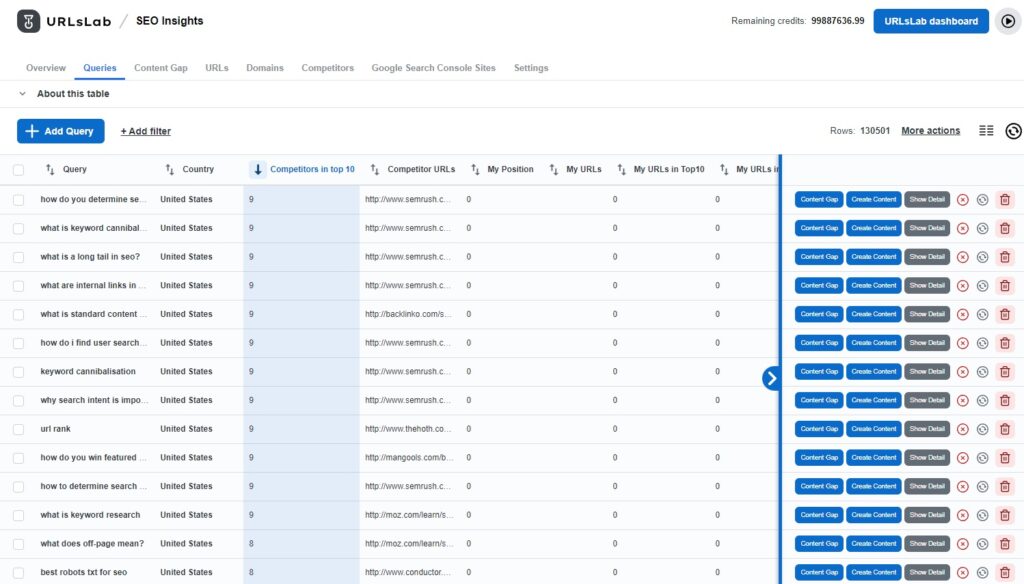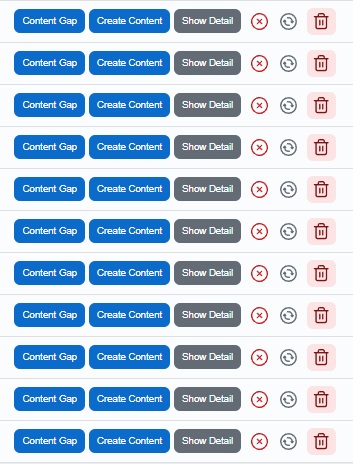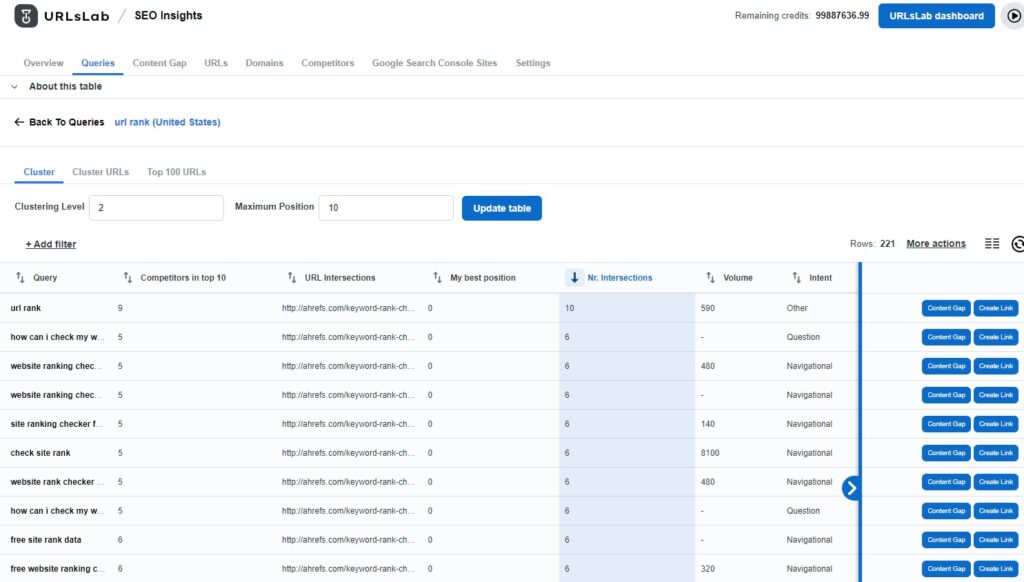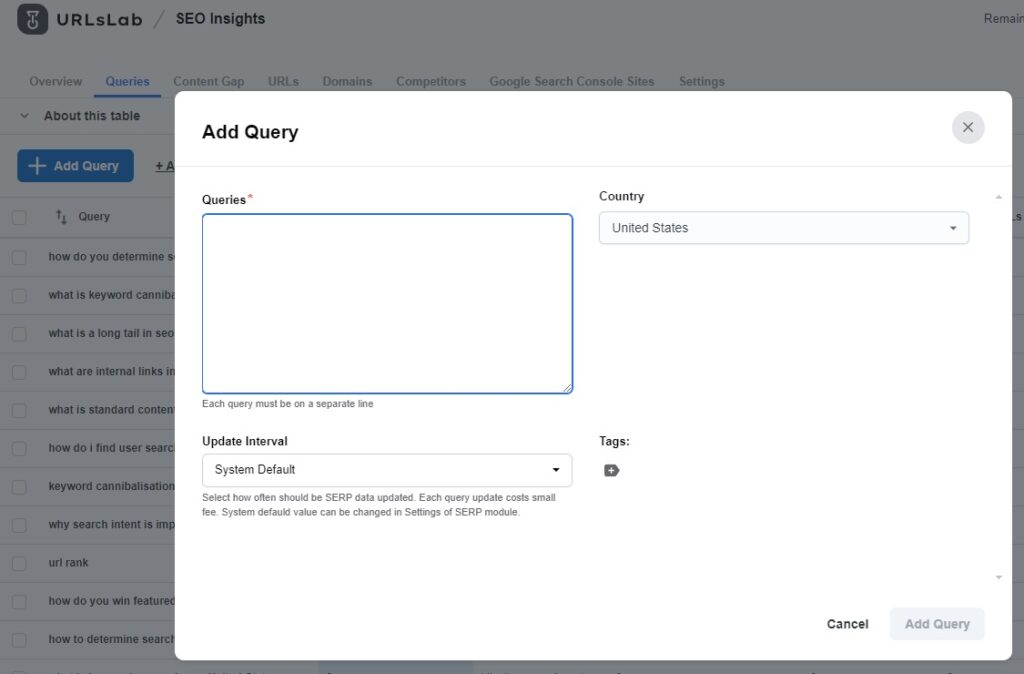Delve into the dynamic world of URLsLab’s SERP Queries feature, designed to elevate your digital footprint. Learn how this tool empowers users to enhance search engine visibility and engagement, driving impactful results for your online endeavors.
What is the queries feature?
The Queries feature is a part of URLsLab’s SEO insights, and it showcases a list of Search Engine Results Page (SERP) queries, each accompanied by its processing status and identification method. The URLsLab Service seamlessly conducts updates to the SERP data in the background.
How it works?
You have the option to manually define these queries, import them from the Google Search Console, or let them be automatically discovered through a function located in the Settings tab.

Each query contains important data such as:
- Country
- Competitors in top 10
- Competitors URLs
- My position
- My URLs
- My URLs in top 10
- My URLs in top 100
- Internal links
- Volume
- Intent
These data are helpful when sorting queries. You either use a filter to select queries or sort the queries by clicking on the value name to sort the queries in ascending or descending.
Besides that, you also have options to open the query in:
- Content gap
- AI content (by clicking to create content)
- Detailed version (show detail – or you can click to query itself)
Queries can be additionally disabled, processed again, or removed.

When you open a query (either by clicking on it, or by selecting “Show detail”), you will get a query cluster and, Cluster URLs and Top 100 URLs to query.

And again, all these data can be sorted by various factors.
What are the benefits of URLsLab’s queries feature?
Complex content data collection
By clicking on each query, you will get a detailed overview of related queries and URLs with all the information needed. Such a collection of data will make your workflow more organized and improve the efficiency of day-to-day operations.
Overview of competition
For each query, the number of competitors in the top 10 and competitors’ URLs are displayed. The higher these numbers are, the higher your chance to get new content ideas you may not rank to already.
Prioritization by volume or search intent
Since keyword volume and search intent are important parts of a successful SEO strategy, you can filter queries to display desired values (for example: transactional search intent)
How to test the queries feature?
- Add a new query by clicking on Add query (you can also choose to import more queries from CSV by more actions → import CSV)

- Refresh table
- Discover queries cluster and URLs cluster in order to optimize content on your website.
Tips to use the queries feature
Create an internal link for queries in the cluster
When you open a query, you have the option to create an internal link. This action will redirect you to the link-building feature. Such a possibility will help you create a strong and relevant internal link-building structure.
Open in the content gap
By clicking to the Content gap in the query, you will be redirected to the content gap feature, which will lead you to a better understanding of the differences between your URL and your competitor’s URLs.
Select a higher number of clustering level
The higher the number you choose for the clustering level, the more relevant results you will get. Don’t forget to click on the Update table button to refresh results.

URL Monitoring is crucial for enhanced visibility, streamlined link management, error detection, and SEO optimization. It provides valuable insights and tools to improve website performance and user experience. With features like link validation and customized link text fragments, it's a game-changer for website owners and marketers.
Automate Customer Support and improve SEO
The URLsLab WordPress plugin offers AI-powered content generation, SEO automation, and user experience enhancement. It also optimizes media and provides links and image management. Download the plugin now to improve your website.
URL Monitoring is crucial for enhanced visibility, streamlined link management, error detection, and SEO optimization. It provides valuable insights and tools to improve website performance and user experience. With features like link validation and customized link text fragments, it's a game-changer for website owners and marketers.

